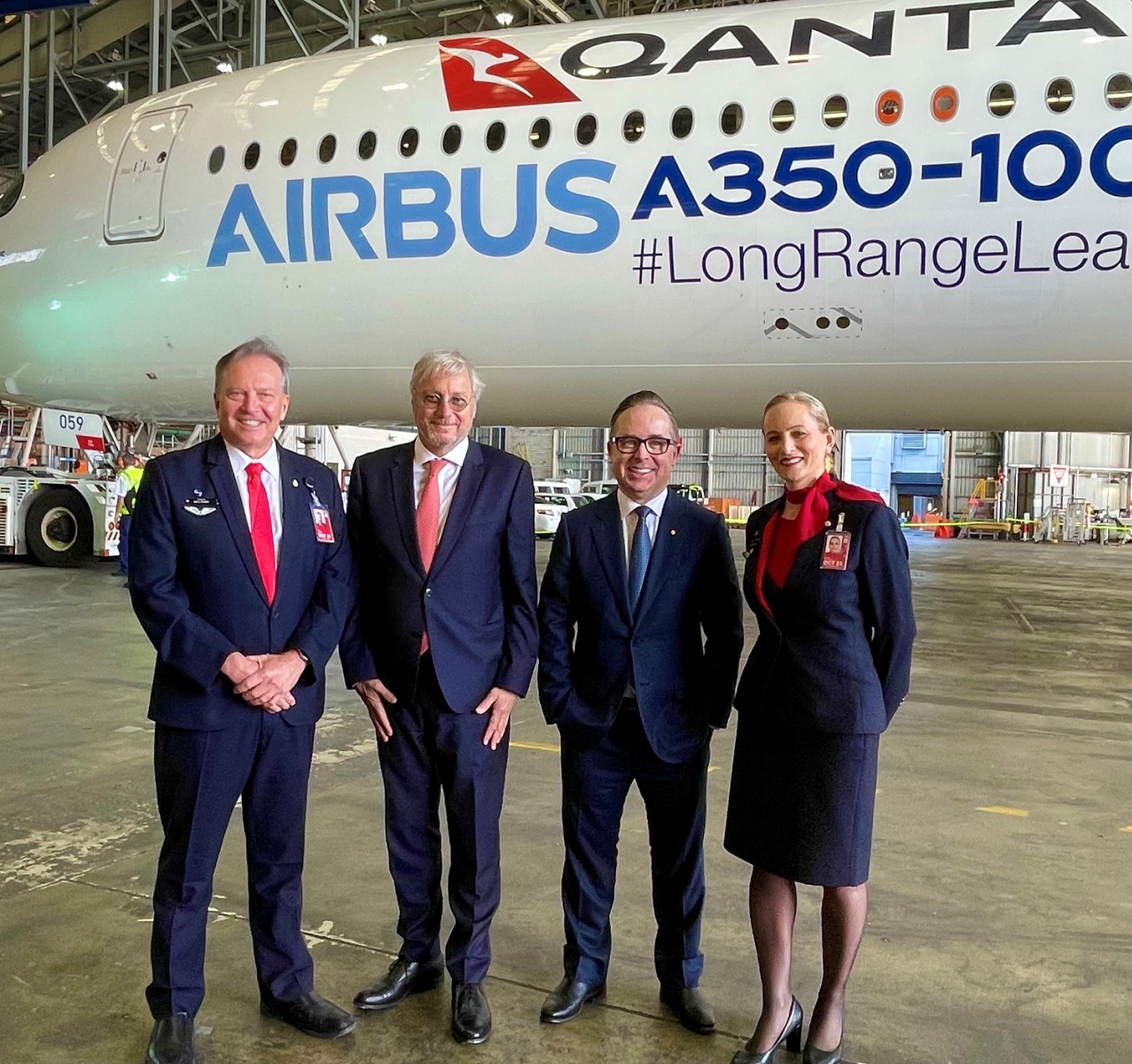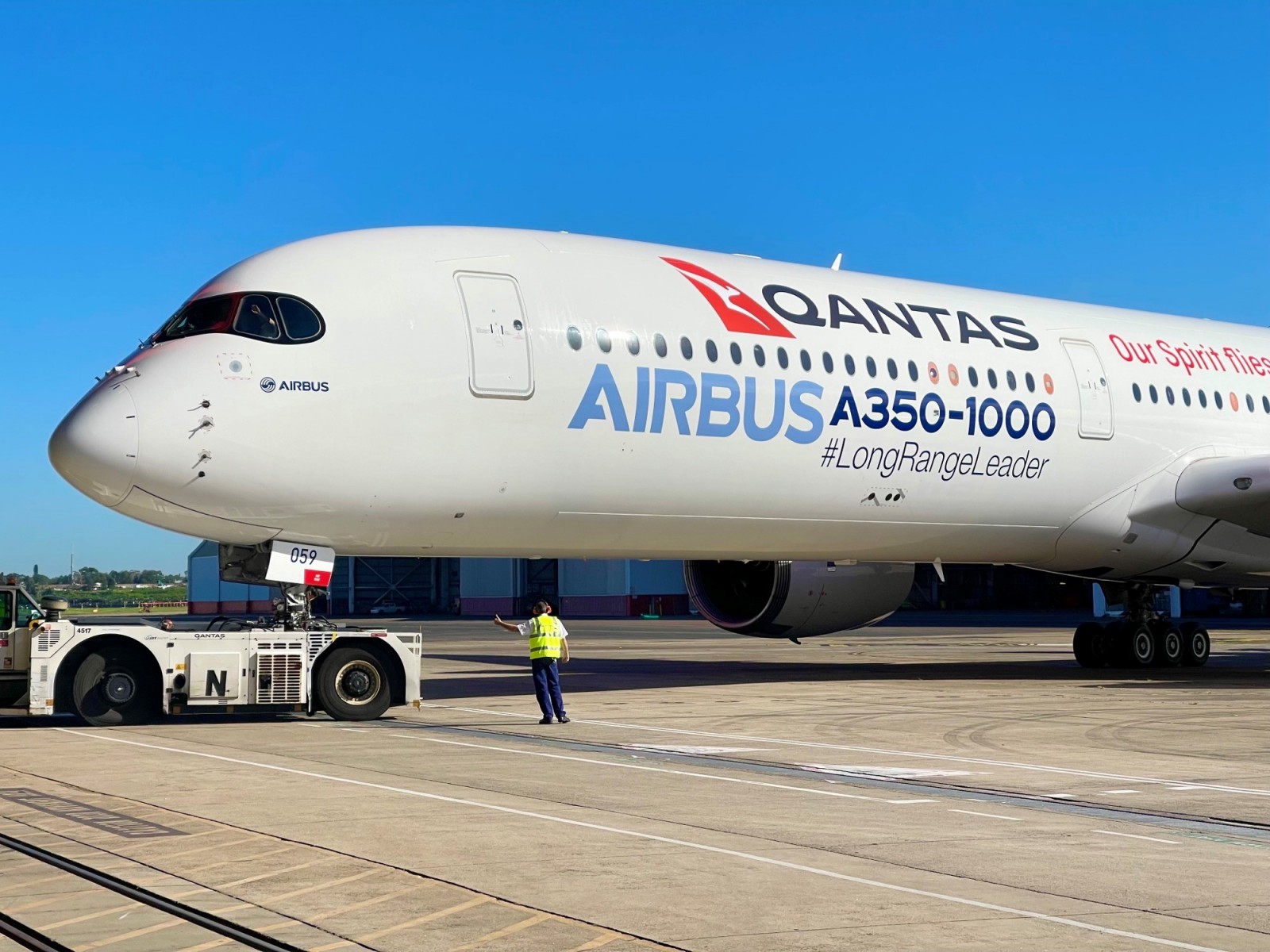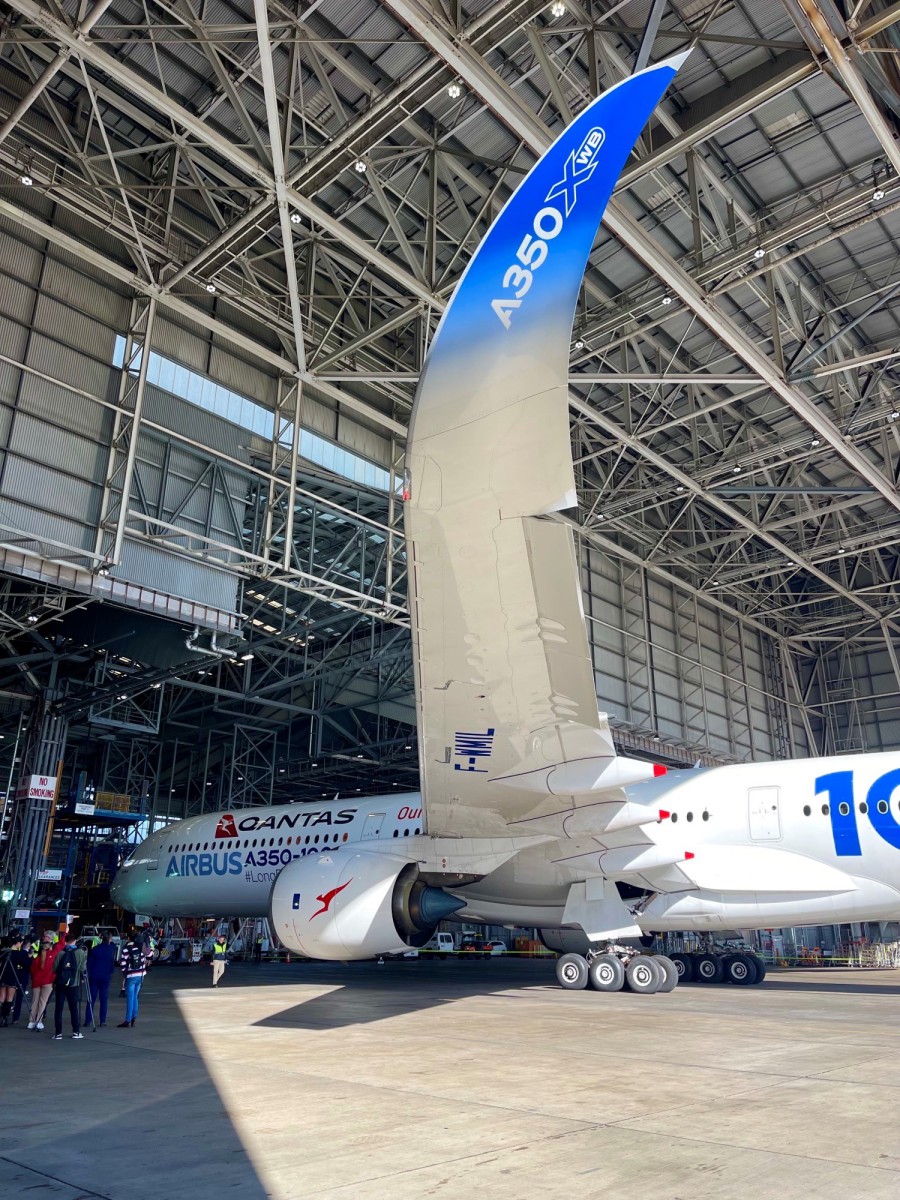Qantas 11 weeks from declaring bankruptcy in 2020
02 May, 2022
4 min read
By joining our newsletter, you agree to our Privacy Policy


Qantas was within just 11 weeks of declaring bankruptcy after COVID-19 struck in early 2020.
The shock revelation came from Qantas boss Alan Joyce as he announced the airline’s biggest order in its 102-year history for up to 146 aircraft worth $34 billion as revealed by AirlineRatings.com yesterday.
“We were 11 weeks from bankruptcy,” Mr Joyce told guests and media at the order signing ceremony with Airbus in Sydney on Monday.
Mr Joyce said the airline had to change and reinvent itself and it had emerged stronger and more resilient after the chaos of the past two years.
Qantas has sold off property and aircraft in order to survive.
Mr Joyce said that revenue growth in the past three-month period had led to a rapid reduction in group net debt, down from A$5.5b at December 31 to A$4.5b by the end of April — and below pre-COVID levels.
Mr Joyce said that debt peaked at more than A$6.4b at the height of border closures.
“We have come through the other side of the pandemic a structurally different company,” Mr Joyce said.
SEE the podcast: Flight Safety Detectives dissect the Netflix doco “Downfall”.
READ: Can the giant AN-225 fly again?
READ: More serious questions raised about the ATSB’s MH370 data review
“Our domestic market share is higher and the demand for direct international flights is even stronger than it was before COVID.
“The board’s decision to approve what is the largest aircraft order in Australian aviation is a clear vote of confidence in the future of the Qantas group.
“Our strategy for these aircraft will see us generate significant benefits for those who make it possible – our people, our customers and our shareholders.”
 Qantas said that while the group still expects to post a significant full-year underlying loss for the full year — that includes the worst of the Delta and Omicron impacts as well as one-off restart costs — the business is on track for second-half underlying earnings of between A$450 million and A$550 million based on current expectations.
“We have come through the other side of the pandemic a structurally different company,” said Qantas chief executive Alan Joyce. “Our domestic market share is higher and the demand for direct international flights is even stronger than it was before COVID.
An Airbus A350-1000 prototype flew into Sydney from Perth on Monday to headline the huge order.
https://www.youtube.com/watch?v=MzMpuQrWLbg
Domestically, Qantas will start the renewal of its narrow-body jets with firm orders for 20 Airbus A321XLRs and 20 A220-300s as its Boeing 737s and 717s are gradually retired. The first of these aircraft will start to arrive in late 2023, with the order including purchase right options for another 94 aircraft for delivery through to at least 2034.
Internationally, 12 Airbus A350-1000s have been ordered to operate non-stop flights from Australia to other cities including New York and London.
Qantas said these aircraft would feature market-leading passenger comfort in each travel class, with services scheduled to start by the end of 2025 from Sydney.
All of these next-generation aircraft – through their lower emissions, longer range, less noise and better economics – will improve how people travel around Australia and overseas.
“New types of aircraft make new things possible,” Mr Joyce said. “That’s what makes today’s announcement so significant for the national carrier and for a country like Australia where air travel is crucial.
“Throughout our history, the aircraft we’ve flown have defined the era we’re in. The 707 introduced the jet age, the 747 democratised travel and the A380 brought a completely new level of comfort.
“The A350 and Project Sunrise will make any city just one flight away from Australia. It’s the last frontier and the final fix for the tyranny of distance. As you’d expect, the cabin is being specially designed for maximum comfort in all classes for long-haul flying.
“The A320s and A220s will become the backbone of our domestic fleet for the next 20 years, helping to keep this country moving. Their range and economics will make new direct routes possible, including serving regional cities better.
“These newer aircraft and engines will reduce emissions by at least 15 per cent if running on fossil fuels, and significantly better when run on sustainable aviation fuel. This order brings us closer to our commitment to reach net-zero emissions by 2050. Project Sunrise will be carbon neutral from day one.”
Qantas said that while the group still expects to post a significant full-year underlying loss for the full year — that includes the worst of the Delta and Omicron impacts as well as one-off restart costs — the business is on track for second-half underlying earnings of between A$450 million and A$550 million based on current expectations.
“We have come through the other side of the pandemic a structurally different company,” said Qantas chief executive Alan Joyce. “Our domestic market share is higher and the demand for direct international flights is even stronger than it was before COVID.
An Airbus A350-1000 prototype flew into Sydney from Perth on Monday to headline the huge order.
https://www.youtube.com/watch?v=MzMpuQrWLbg
Domestically, Qantas will start the renewal of its narrow-body jets with firm orders for 20 Airbus A321XLRs and 20 A220-300s as its Boeing 737s and 717s are gradually retired. The first of these aircraft will start to arrive in late 2023, with the order including purchase right options for another 94 aircraft for delivery through to at least 2034.
Internationally, 12 Airbus A350-1000s have been ordered to operate non-stop flights from Australia to other cities including New York and London.
Qantas said these aircraft would feature market-leading passenger comfort in each travel class, with services scheduled to start by the end of 2025 from Sydney.
All of these next-generation aircraft – through their lower emissions, longer range, less noise and better economics – will improve how people travel around Australia and overseas.
“New types of aircraft make new things possible,” Mr Joyce said. “That’s what makes today’s announcement so significant for the national carrier and for a country like Australia where air travel is crucial.
“Throughout our history, the aircraft we’ve flown have defined the era we’re in. The 707 introduced the jet age, the 747 democratised travel and the A380 brought a completely new level of comfort.
“The A350 and Project Sunrise will make any city just one flight away from Australia. It’s the last frontier and the final fix for the tyranny of distance. As you’d expect, the cabin is being specially designed for maximum comfort in all classes for long-haul flying.
“The A320s and A220s will become the backbone of our domestic fleet for the next 20 years, helping to keep this country moving. Their range and economics will make new direct routes possible, including serving regional cities better.
“These newer aircraft and engines will reduce emissions by at least 15 per cent if running on fossil fuels, and significantly better when run on sustainable aviation fuel. This order brings us closer to our commitment to reach net-zero emissions by 2050. Project Sunrise will be carbon neutral from day one.”

 Qantas said that while the group still expects to post a significant full-year underlying loss for the full year — that includes the worst of the Delta and Omicron impacts as well as one-off restart costs — the business is on track for second-half underlying earnings of between A$450 million and A$550 million based on current expectations.
“We have come through the other side of the pandemic a structurally different company,” said Qantas chief executive Alan Joyce. “Our domestic market share is higher and the demand for direct international flights is even stronger than it was before COVID.
An Airbus A350-1000 prototype flew into Sydney from Perth on Monday to headline the huge order.
https://www.youtube.com/watch?v=MzMpuQrWLbg
Domestically, Qantas will start the renewal of its narrow-body jets with firm orders for 20 Airbus A321XLRs and 20 A220-300s as its Boeing 737s and 717s are gradually retired. The first of these aircraft will start to arrive in late 2023, with the order including purchase right options for another 94 aircraft for delivery through to at least 2034.
Internationally, 12 Airbus A350-1000s have been ordered to operate non-stop flights from Australia to other cities including New York and London.
Qantas said these aircraft would feature market-leading passenger comfort in each travel class, with services scheduled to start by the end of 2025 from Sydney.
All of these next-generation aircraft – through their lower emissions, longer range, less noise and better economics – will improve how people travel around Australia and overseas.
“New types of aircraft make new things possible,” Mr Joyce said. “That’s what makes today’s announcement so significant for the national carrier and for a country like Australia where air travel is crucial.
“Throughout our history, the aircraft we’ve flown have defined the era we’re in. The 707 introduced the jet age, the 747 democratised travel and the A380 brought a completely new level of comfort.
“The A350 and Project Sunrise will make any city just one flight away from Australia. It’s the last frontier and the final fix for the tyranny of distance. As you’d expect, the cabin is being specially designed for maximum comfort in all classes for long-haul flying.
“The A320s and A220s will become the backbone of our domestic fleet for the next 20 years, helping to keep this country moving. Their range and economics will make new direct routes possible, including serving regional cities better.
“These newer aircraft and engines will reduce emissions by at least 15 per cent if running on fossil fuels, and significantly better when run on sustainable aviation fuel. This order brings us closer to our commitment to reach net-zero emissions by 2050. Project Sunrise will be carbon neutral from day one.”
Qantas said that while the group still expects to post a significant full-year underlying loss for the full year — that includes the worst of the Delta and Omicron impacts as well as one-off restart costs — the business is on track for second-half underlying earnings of between A$450 million and A$550 million based on current expectations.
“We have come through the other side of the pandemic a structurally different company,” said Qantas chief executive Alan Joyce. “Our domestic market share is higher and the demand for direct international flights is even stronger than it was before COVID.
An Airbus A350-1000 prototype flew into Sydney from Perth on Monday to headline the huge order.
https://www.youtube.com/watch?v=MzMpuQrWLbg
Domestically, Qantas will start the renewal of its narrow-body jets with firm orders for 20 Airbus A321XLRs and 20 A220-300s as its Boeing 737s and 717s are gradually retired. The first of these aircraft will start to arrive in late 2023, with the order including purchase right options for another 94 aircraft for delivery through to at least 2034.
Internationally, 12 Airbus A350-1000s have been ordered to operate non-stop flights from Australia to other cities including New York and London.
Qantas said these aircraft would feature market-leading passenger comfort in each travel class, with services scheduled to start by the end of 2025 from Sydney.
All of these next-generation aircraft – through their lower emissions, longer range, less noise and better economics – will improve how people travel around Australia and overseas.
“New types of aircraft make new things possible,” Mr Joyce said. “That’s what makes today’s announcement so significant for the national carrier and for a country like Australia where air travel is crucial.
“Throughout our history, the aircraft we’ve flown have defined the era we’re in. The 707 introduced the jet age, the 747 democratised travel and the A380 brought a completely new level of comfort.
“The A350 and Project Sunrise will make any city just one flight away from Australia. It’s the last frontier and the final fix for the tyranny of distance. As you’d expect, the cabin is being specially designed for maximum comfort in all classes for long-haul flying.
“The A320s and A220s will become the backbone of our domestic fleet for the next 20 years, helping to keep this country moving. Their range and economics will make new direct routes possible, including serving regional cities better.
“These newer aircraft and engines will reduce emissions by at least 15 per cent if running on fossil fuels, and significantly better when run on sustainable aviation fuel. This order brings us closer to our commitment to reach net-zero emissions by 2050. Project Sunrise will be carbon neutral from day one.”

Next Article
2 min read
Qantas triples profit but misses mark

Get the latest news and updates straight to your inbox
No spam, no hassle, no fuss, just airline news direct to you.
By joining our newsletter, you agree to our Privacy Policy
Find us on social media
Comments
No comments yet, be the first to write one.

